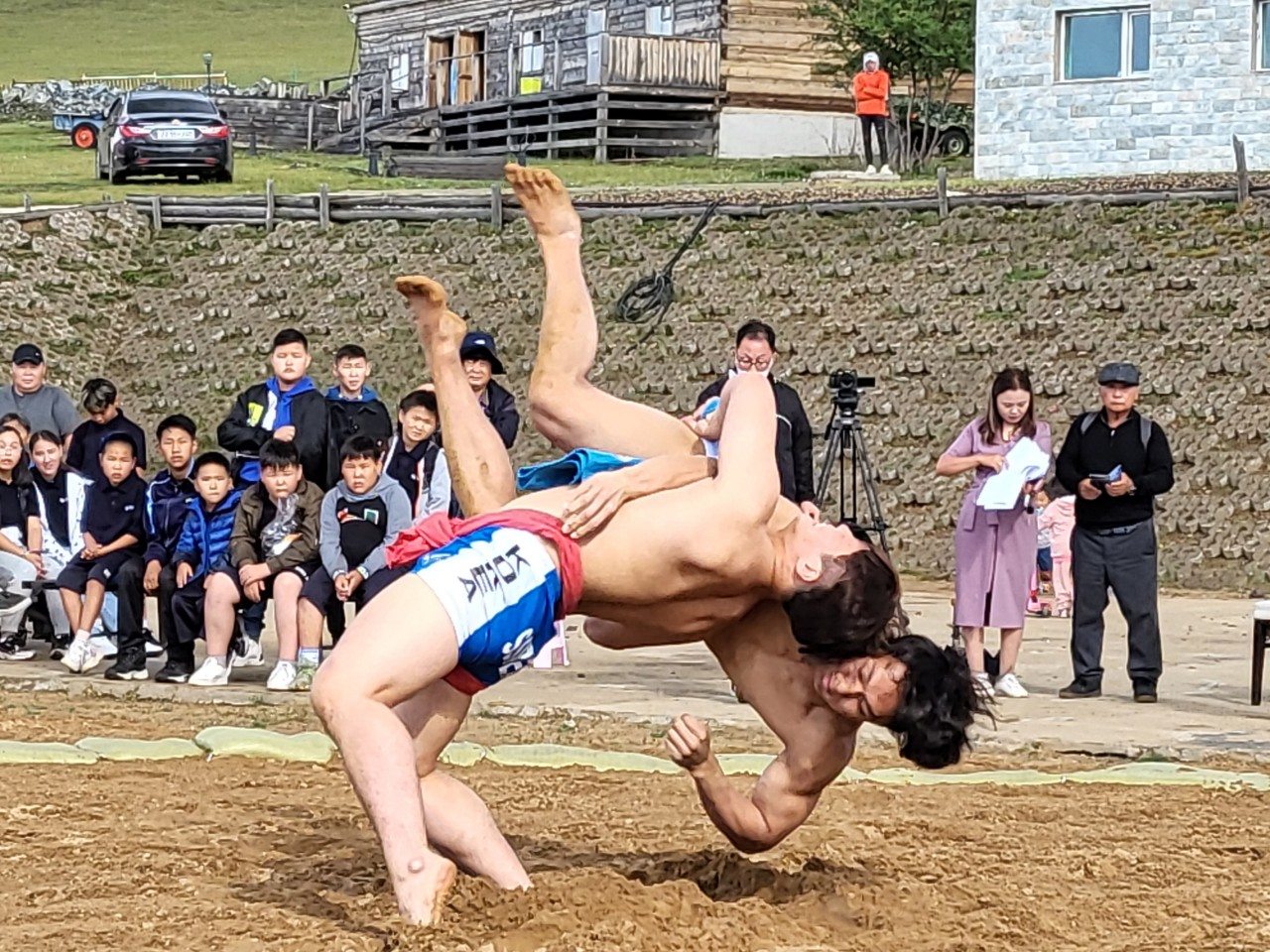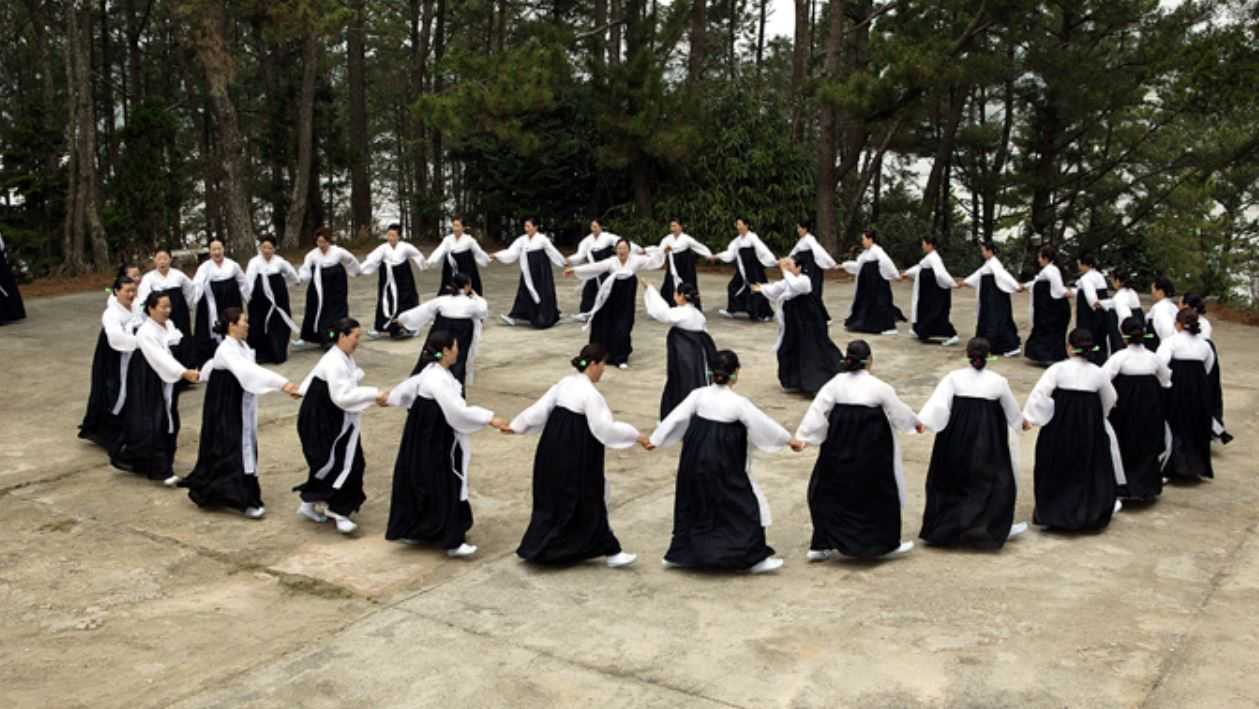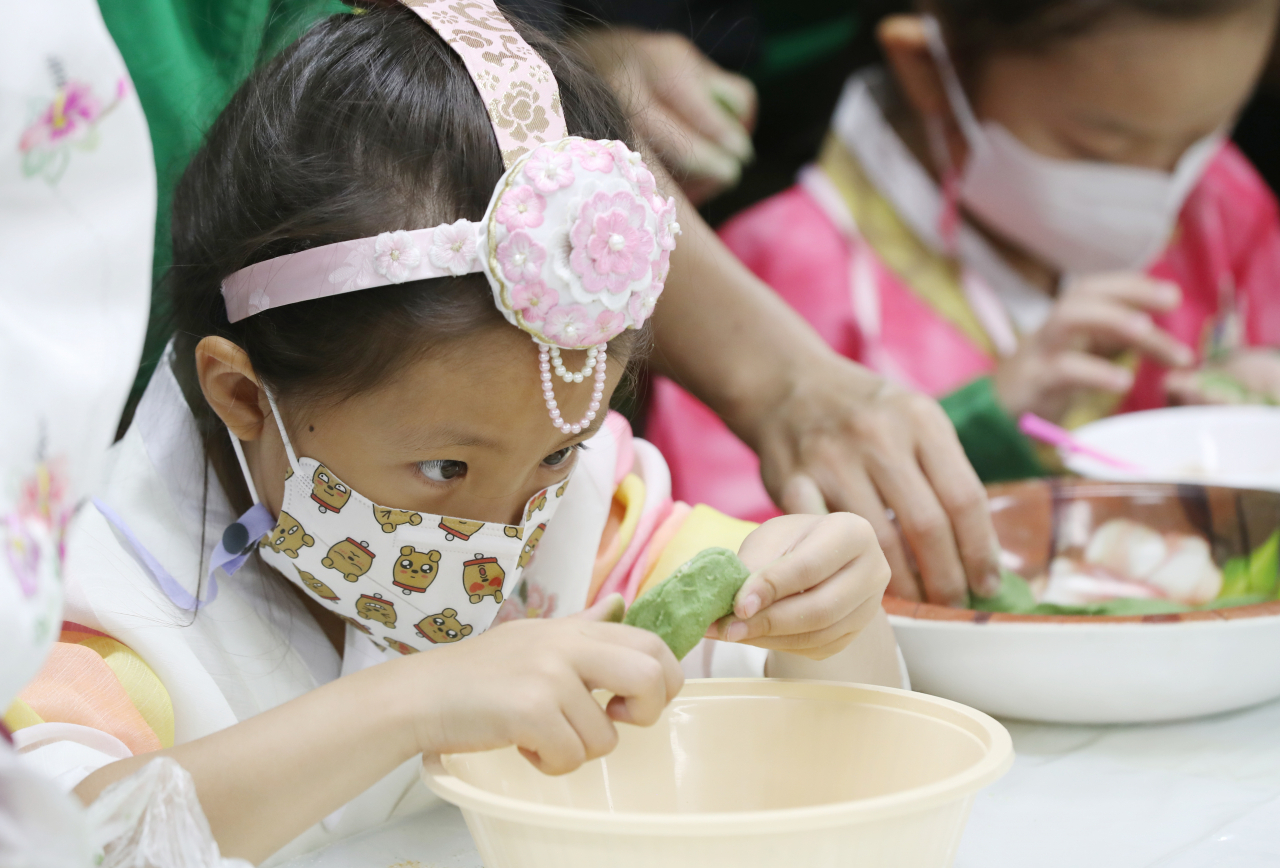Traditions of Chuseok holidays: how it was and how it is
By Yoon Min-sikPublished : Sept. 10, 2022 - 11:00

In what is commonly dubbed by local media as “the great migration of the nation,” flocks of people travel across the country to gather with their relatives each Chuseok, which this year falls on Saturday. Some people make the trips clad in “chuseokbim,” new clothing and shoes specially prepared for one of Korea's biggest holidays.
Although commonly referred to as “Korean Thanksgiving,” Chuseok is actually not really about giving thanks for the year’s harvest. It is more a celebration of the mid-autumn full moon during which people gathered before the harvest to enjoy food, play games and pray for a bountiful year.
Dressing up nicely for Chuseok
According to the government-compiled Encyclopedia of Korean Folk Culture, the tradition of preparing a set of new clothing for Chuseok is believed to have begun when Korea became a modern state, but its roots date back all the way to the era of the Three Kingdoms (57 BC to 668 AD). The ancient records tell of the women’s weaving competition called jeongma that used to take place during Chuseok, which leads scholars to believe that the women had prepared clothes for fall and the coming winter at this time.
Just as similarly as wearing seolbim for Seollal, or lunar new year holidays, was an important time to dress up properly to pay respect to elders, chuseokbim is thought to have provided an opportunity for people to dress properly before meeting up with their relatives.

Games of Chuseok
Ganggangsullae, inscribed in 2009 in the UNESCO’s Intangible Cultural Heritage list, is a seasonal harvest and fertility ritual that is performed under a full moon by young, unmarried village women. They gather in a circle, join hands, sing and dance with games involving mimes that reflect life in a fishing or farming village.
According to the Korean National Commission for UNESCO, the roots of the game can be found in the rural villages of Mahan Confederacy, a loose coalition of small countries that existed in the southern parts of the Korean Peninsula about 2,000 years ago. While Korean society has been mostly male-driven throughout the nation’s history, this celebration offered a rare chance for women to be free from the social oppression to dance and sing among themselves.
Ganggangsullae also played an important role for Koreans during the Japanese invasion in the 16th century.
Adm. Yi Sun-sin, one of Korea's most revered war heroes, had the women in the region play the game at night around a bonfire. The flickering light and the noise made the Japanese troops overestimate the size of Yi’s forces, which helped Yi win the battle.
Ganggangsullae is simultaneously the name of the game and the refrain of the song that is repeated after each verse, although the exact meaning of the word is unknown. It is considered one of the most important hereditary customs of the country’s harvest-centered culture.
Another beloved Korean traditional sport is traditional wresting, ssireum, which was inscribed onto UNESCO’s list of intangible cultural assets in 2018, marking the first time ever South and North Korea jointly made such a bid. The sport enjoyed its heyday in the 1990s, and produced several stars like Kang Ho-dong, who later on became one of the most popular comedians and TV personalities in the country.

Chuseok feast
Songpyeon rice cakes are what probably pops into most Koreans' minds when they think of Chuseok. Unlike several other Korean traditional dishes that share roots with neighboring countries, songpyeon are thought to be exclusively Korean, made in half-moon shapes with semi-sweet fillings comprising of soybeans, chestnuts, red beans, sesame seeds and honey.
Making songpyeon is a tradition that can be traced back to the Goryeo Kingdom (918-1392). A well-known superstition related to it is that if you can make a beautifully-shaped songpyeon, you will give birth to a beautiful child.
Despite its popularity, songpyeon has not made any lists for cultural assets. But last year, the CHA announced that it would designate making of tteok (Korean rice cakes) as the 145th National Intangible Cultural Heritage.
There has been debate as to which dishes should be prepared for the holiday, which is of particular significance as Chuseok foods are usually used for the ancestral ritual of "charye." The heavy burden of preparation often falls solely on women and this often leads to disputes within the family.
Sungkyunkwan Confucian Association, a state-financed authority on the traditional Confucian culture in the country, on Monday announced an official guideline for a simplified charye table for Chuseok. This consists of songpyeon, seasoned vegetables called namul, kimchi, fruits, alcohol and a Korean traditional dish called jeok, roasted and seasoned fish, meat and vegetables pierced by a stick.
Other types of meat, fish and tteok could be added, but not jeon -- a Korean style fried fritter made with wheat and seasoned by sliced meat, fish, vegetables -- as it is against the tradition to offer fried food to the ancestors.
Modern Chuseok
With the exception of charye, most Chuseok traditions are no longer practiced by the majority of the population. While ancestors of Korea gathered for a round of ssireum or ganggangsullae under the moonlight, most citizens play these games only in folk villages.
While some people still dress up in hanbok, most of population wear suits or casual clothing. Those hoping to catch a glimpse of a Korean family dressing up in new hanbok and playing games in the backyard are likely to be disappointed, as these traditions have all but died out.
Despite the modernization of the holiday, the tradition of visiting relatives remains strong. A recent survey by job-seeking site Alba Cheonguk of 1,580 adults, 58.4 percent said they will visit their hometown for Chuseok.
Rather than the festivities of the past, the modern iteration of Chuseok has turned into the time of the year where you visit your hometown for delicious traditional meal and relax for a few days.







![[Graphic News] More Koreans say they plan long-distance trips this year](http://res.heraldm.com/phpwas/restmb_idxmake.php?idx=644&simg=/content/image/2024/04/17/20240417050828_0.gif&u=)
![[KH Explains] Hyundai's full hybrid edge to pay off amid slow transition to pure EVs](http://res.heraldm.com/phpwas/restmb_idxmake.php?idx=644&simg=/content/image/2024/04/18/20240418050645_0.jpg&u=20240419100350)






![[From the Scene] Monks, Buddhists hail return of remains of Buddhas](http://res.heraldm.com/phpwas/restmb_idxmake.php?idx=652&simg=/content/image/2024/04/19/20240419050617_0.jpg&u=20240419175937)

![[KH Explains] Hyundai's full hybrid edge to pay off amid slow transition to pure EVs](http://res.heraldm.com/phpwas/restmb_idxmake.php?idx=652&simg=/content/image/2024/04/18/20240418050645_0.jpg&u=20240419100350)

![[Today’s K-pop] Illit drops debut single remix](http://res.heraldm.com/phpwas/restmb_idxmake.php?idx=642&simg=/content/image/2024/04/19/20240419050612_0.jpg&u=)